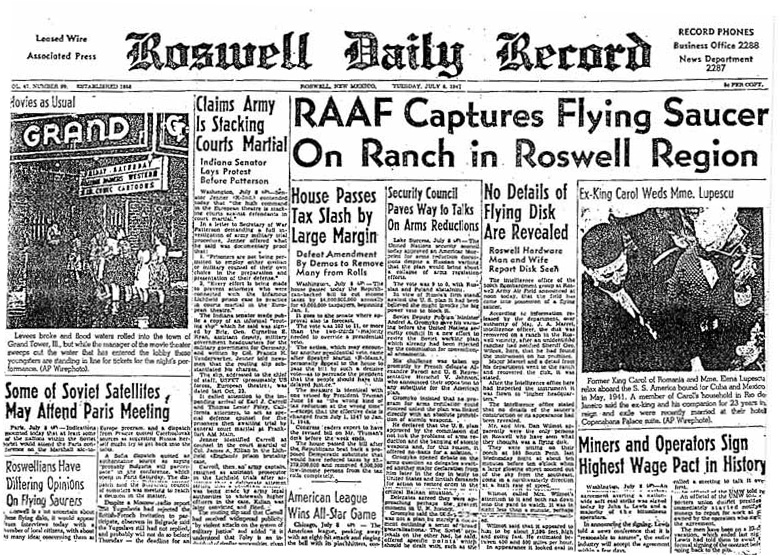I watched the first episode and am looking forward to watching more. Thanks for posting the link, Ulios.
I don't see too much value in quizzing the elderly farmers and ranchers with a lie detector of some sort who said they saw strange debris. These are not particularly strong claims except of corroboration.
Some debris with unusual properties is not particularly earthshattering. It was most likely parts from a weather balloon made of
Mylar, which would have looked like aluminum foil in the form of thin, strong and lightweight plastic or polyester wrap (with a
metallized film coating from vaporizing a metal on the surface like aluminum or gold).
Now, this debris was found in July of 1947, and Mylar was not introduced until the early-1950s, but there could have been other strong and lightweight materials like cellulose or acetate motion picture film stock that might have had a similar appearance or use for a balloon. We don't have the actual materials in evidence, so it is hard to say for sure.
A balloon could have been falling slowly to the group after a long trip around the world and then the remaining hydrogen gas catching on fire like the Hindenburg and then crashing down in the wind and thunderstorm activity reported on that night.
This is not believed to be an ordinary weather balloon but something more advanced and far more secret ─ an atmospheric sounding balloon looking to collect air samples in the jet stream of radionuclides that would detect clandestine Soviet atomic bomb testing. The Soviets ultimately succeeded in exploding an atomic bomb of their own in 1949, about twenty years before the Manhattan Project overseer, Lt. General Leslie R. Groves expected them to.
Some witnesses saw what looked like a "flying" disc crashing to the ground in the high desert near Roswell, New Mexico. A few days later, on July 8, 1947 ─ officials from the Roswell U.S. Army Air Field issued a press release stating that they had recovered a flying disc which had crashed.
Roswell IncidentThe Army quickly retracted this statement and said that it had just been a weather balloon. The earlier disinformation only increased the attention given to the incident (and hence, the top secret balloon program) ─ so they immediately tried to walk it back (and awkwardly).

The Roswell Incident was eventually forgotten until more recent times, but Army Air Corps Lt. Colonel
Jesse Marcel (1907-1986) was interviewed later saying that the crashed material had extra-terrestrial origins. So Marcel is a good one to check with the video lie-detector apparatus ─ and he "passes."
Marcel says that he found some I-beam like materials that was strong and lightweight, not like anything that he had ever seen before in aviation metallurgy. Marcel also noted that the beams had lettering on them like some kind of foreign hieroglyphics.
This too, might have been some kind of unique and new lightweight plastic materials, or even some king of rare metals like titanium or magnesium alloy. The weird writing might have been some kind of encoded serial number in case the balloon was captured in enemy territory, and would obfuscate whose balloon it really was.
Since we don't have the materials to examine and test ourselves, there isn't much else that we can do with these claims.
The program seemed to move at a glacial page ─ but I still had to pause all the time to read captions and examine closely many of the pictures shown.
Also, I was not impressed that they did not even try to get the Army uniforms right for the era. It looked like play night at the High School theater. They had "the Colonel" who was supposed to be Marcel's boss wearing two star-like pins on his lapels instead of on his shoulder straps.
And in reality, I think the Army was were using the light tan Summer khakis in garrison, like General of the Army/Air Force Henry "Hap" Arnold (bottom) is wearing, and not the usual dark khaki tunics that Marcel is pictured wearing (below) from 1947.
